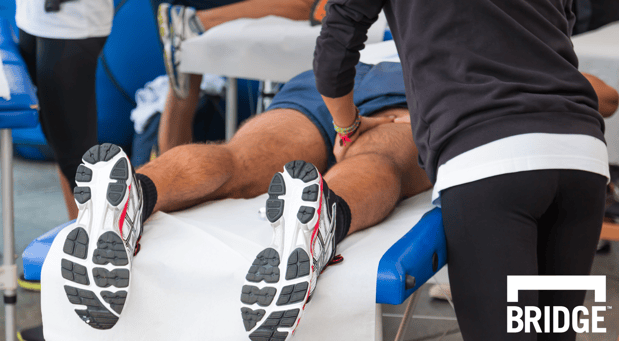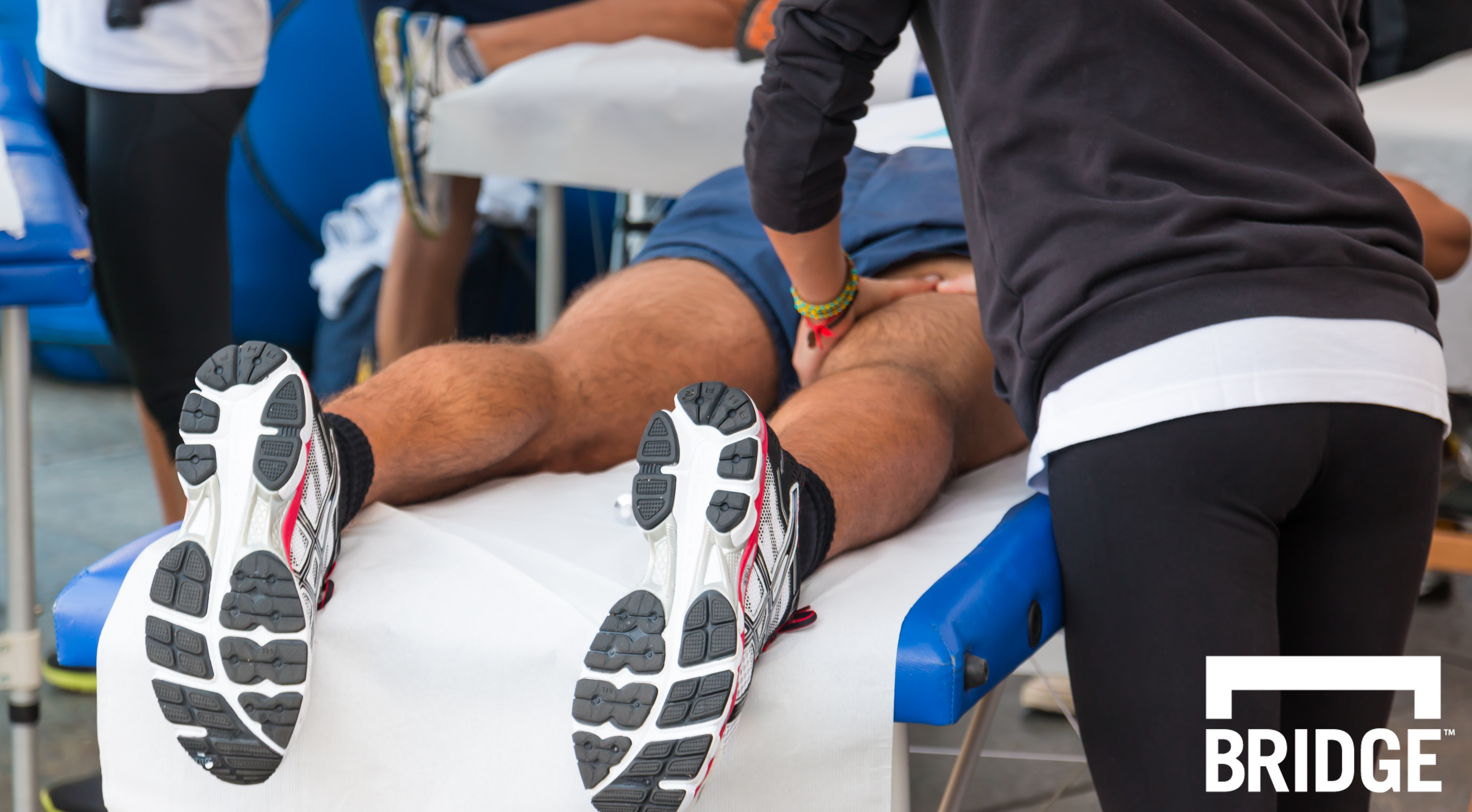Avoiding Injury in High-Risk Areas

Much of injury prevention for elite athletes lies in the quality of his or her conditioning and the adequate balance between training and recovery. However, there are a few common areas of the body that are exceptionally prone to injury for all athletes. Chief among these are the shoulders, lower back, and knees. These areas can be hypermobile, as in the case of the shoulder, prone to bearing excessive load, as in the case of the lower back, or both. With a greater understanding of what constitutes a high-risk joint or muscle group, and which exercises can support these areas, all athletes will be better prepared for training and peak performance.
Stability vs. Mobility
There are several factors that place athletes at risk of injury, many of which occur outside of training altogether (sleep, nutrition, stress, etc. all play a role). Our discussion centers primarily on the mechanical and functional aspects of your body and its movement patterns to better elucidate high-risk regions. A central theme of injury risk and prevention is the balance between joint stability and joint mobility. While athletes need a certain degree of both, these traits tend to oppose one another. Meaning, a more stable joint tends to have limited mobility, while a very mobile joint has reduced stability. Let’s take a look at the shoulder joint as an example. Many movements in sport require a high range of motion about the shoulder joint. Swimmers cycle their shoulder every stroke they take, while throwing and swinging motions demand equally high mobility in the shoulder. Through training, athletes develop benign micro tears in the joint tissue to accommodate a greater range of motion, thus sacrificing a bit of stability for a bit more mobility. Up to a point, this added mobility is beneficial to athletes. However, joints with less stability are more prone to injury via larger tears or dislocations. It is critical for athletes to develop the muscle groups surrounding these mobile joints to support them during movement. For more information on hypermobile joints, refer to this article here.
Muscle Imbalances & Excessive Load Bearing
Correct technique in strength training is your number one defense against injury. This is especially important as athletes go up in weight or increase the number of repetitions. When fatigue sets in, your technique can fall apart. Muscles that were not intended to bear any load may be improperly recruited to help complete the movement. Let’s analyze this through the lower back. During a set of squats, a correct movement would utilize the core, hamstrings, quadriceps, and glute muscles, among others, to complete a repetition. If any of these muscle groups are weak or do not activate, or if the athlete has poor technique, other muscles must be used to support the movement. In lower body exercises, the lower back region often plays this role. Athletes with exceptionally tight lower backs, or those who have pain in this region should speak with their athletic trainer or coach to determine which area they need to improve upon. This also reflects the need for development, as these tests help reveal an athlete’s strengths and weaknesses during functional movement patterns.
Equally important is the risk of injury due to muscle imbalances. Part of the reason why one muscle group may bear excessive load is because another muscle group may be too weak or inactive to complete the movement properly. Let’s take a look at the knee joint as an example. During flexion/extension of the knee joint, as in squats, jumps, and lunges, muscles in the legs, pelvic region, and core should be engaged. Many athletes, however, do not properly activate their glute and core muscles. In this case, the knee must now absorb the force that should be distributed between the pelvic region and posterior chain. Moreover, the glute muscles usually aid the knee in maintaining correct joint angles. A lack of glute strength may allow the knees to cave inward more, placing the ACL at much higher risk of tearing.
With a greater understanding of the biomechanics involved in these high-risk areas, let’s take a look at a few simple exercises you can add to your repertoire for injury prevention.
1. Shoulder
The following exercises will develop greater stability around the shoulder and scapula by challenging your coordination and strength through more complicated plank variations.
- Front Bridge - Rockers
- Front Bridge - Up/Downs
- Front Bridge - Arm Raise
2. Lower Back
The injury prevention goals for the lower back are twofold: 1) to strengthen the lower back muscles to be able to accommodate greater load, and 2) to strengthen the anterior core muscles to increase stability and support the lower back during movement. Theses exercises are a great place to start:
- DB Deadlift
- Reverse Hypers
- Back Bridge
3. Knees
In order to support the knee joint, athletes must develop glute strength and glute activation. For more details on glute activation, please refer to another blog post here. The knees will also benefit from general pelvic stability. Try these exercises to improve stability around the knee:
- TRX Balance Lunge
- Monster Walks - Level 1
- Lateral Squat
All athletes may benefit from a greater awareness of their biomechanics and the steps they can take to minimize injury in high-risk areas. Take your strength training to the next level with these simple tips!
For additional articles on how you can avoid injury, be sure to check out the BridgeAthletic blog!
Related Posts

The Best Bench Press Variation You’re...
This post is part of our Coaches Corner series with Taylor Rimmer. Taylor is NSCA-CPT, StrongFirst...

Does Powerlifting Harm Heart Health?
A recent study has discovered that a 12-week supervised strength training program (SSTP) may result...
-1.png)
Barefoot Running: Is It For You? |...
Run Free: Consider Less Cushion
Updated October 2020:
With more athletes looking for ways to...




